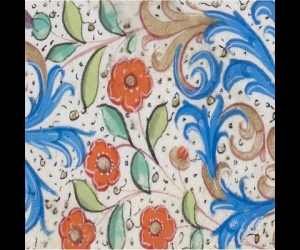
The recently formed Overleaf assembles three of Toronto’s most distinct yet unsung voices in a compelling and elusive amalgam. Synthesist (and occasional bamboo flutist) Heidi Chan (aka Bachelard), saxophonist Kayla Milmine, and Mira Martin-Gray, who has an uncharacteristically acute grasp of mixer feedback, are indeed improvising, but this work trades many of the tropes of the free-improv genre for simmering hallucinatory drift.
Rather than engaging in conversational gestures, they occupy one of those ensemble scenarios where each participant follows their own separate but complementary orbit. Every element is as well-blended as it is heterogenous, which imbues this music with both a painterly surface and an uneasy plurality that sometimes erupts into all-out volatility—especially as the album progresses.
Martin-Gray is the most blatant wildcard, coughing up some of the trio’s strangest and most bilious hues, yet Milmine—who tends toward the opposite end of the spectrum—is deceptively subversive. She’s prone to lying low—or laying out completely—for extended periods, and when she speaks up, many of her contributions read as baldly idiomatic to the saxophone, articulated in a disarmingly clean sonority—the one frequently associated with classical saxophone. However, on “Trefoils in the Forest,” which begins with solos from each player, her dense torrent of mutters, whinnies, and multiphonics demonstrates her enviable fluency and agility on the instrument and contextualizes the stubborn incongruity of her ostensibly straightforward playing elsewhere.
Chan’s orientation is decidedly textural, generating clouds and percolating colour-baths that sneak into the background. Meanwhile, she extends a multi-limbed reach toward the sounds of her bandmates and elsewhere. This latter aspect of her playing underlines, ornaments, annotates—and even distracts the ear from—other events within the sonic picture.
Overleaf is delicately anarchic—slipping from atmospheric hush to raucous bluster without making a spectacle of it. They’ve harnessed the strengths of both seamlessness and contrast, and have somehow managed to open a void where these polar opposites exist simultaneously.



